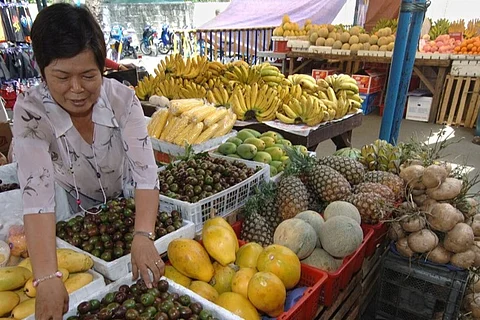
- NEWS
- the EDIT
- COMMENTARY
- BUSINESS
- LIFE
- SHOW
- ACTION
- GLOBAL GOALS
- SNAPS
- DYARYO TIRADA
- MORE

Japan, which imported a total of $87 billion of agricultural products in 2022, the fifth largest in the world that year, will be the Department of Agriculture's target to be an agricultural product export destination.
The DA aimed to be Japan's partner for the Filipino farmers and fisherfolk to have a bigger share of its food market.
During his visit to Japan in December to accompany President Ferdinand Marcos Jr. at the ASEAN-Japan Summit, Agriculture Secretary Francisco Tiu Laurel Jr. met with Japanese officials and businessmen to open more export opportunities for Philippine fish and tropical fruits such as pineapple, bananas, avocado, mangoes, durian, mangosteen, and okra.
As a follow-up to the meetings in Japan, Laurel said the DA has scheduled the first meeting of the Philippines-Japan Joint Committee on Agriculture in the second quarter of this year.
"This very first meeting of the joint agriculture committee of the two Asian neighbors here in the Philippines will provide an avenue to follow through the agri-fisheries trade and market access discussions started in Japan," he said.
Laurel said the joint agriculture meeting in the second quarter will also be an opportunity to discuss technical and project collaborations under the memorandum of cooperation signed in February last year, and the MIDORI Cooperation Plan.
In October, together with other members of the Association of Southeast Asian Nations, the Philippines signed the MIDORI plan which aims to promote cooperation projects using Japanese technology and sharing experiences to build resilient and sustainable agriculture and food systems for future food security.
The DA is also coordinating with the Department of Trade and Industry to secure preferential tariff rates for Philippine bananas, whose leading share of the Japanese market is under threat from Cambodia, Laos, Mexico, and Vietnam whose banana exports to Japan enjoy zero or preferential tariffs.
Philippine bananas are staples for Japanese consumers, accounting for 22 percent of their food basket. The Philippines' proximity to Japan allows the country to deliver low-cost bananas and other tropical fruits compliant with Japanese food standards.
Laurel said that Manila looks at the review of the Japan-Philippines Economic Partnership Agreement as a good initial opportunity "to discuss the Philippines' appeal for a lower tariff on bananas."
Under JPEPA, the tariff on Philippine bananas is pegged at 8 percent from 1 April to 30 September and then increased to 18 percent for imports between 1 October and 31 March of the following year.
The DA is also seeking to revive the Japanese market for Philippine mangoes, whose exports have declined sharply since Japan adopted 2011 stricter sanitary and photo-sanitary standards, especially the maximum residue limit.
During the ASEAN-Japan Summit in December, Laurel led ceremonies to mark the re-entry of Philippine mangoes to Japan, with the presentation of the tropical fruit to his Japanese counterpart.
Agriculture Attache Aleli Maghirang, who is assigned at the Philippine Embassy in Tokyo, said she is hopeful that fresh Davao mangoes' re-entry into the Japanese market will spur "greater confidence to our exporters to continue supplying to Japan."
Laurel has directed the immediate improvement of testing laboratories to align the Philippine food code with those of importing countries like Japan, and the enhancement of farming practices and production of good quality planting materials for expansion and replanting.
Japan is the second largest market for Philippine agri-food exports, enjoying a trade surplus of $824 million in 2022. At the end of the third quarter last year, Philippine agricultural trade with Japan showed a $596.4 million surplus in favor of the Philippines.
